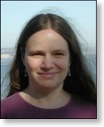SIAM Keynote Speakers
Yalchin Efendiev
(Department of Mathematics & ISC, Texas A&M University, USA)
Generalized Multiscale Finite Element Methods
Abstract: In this talk, I will discuss a general multiscale finite element approach for performing simulations for problems without scale separation over a complex input space. As in multiscale finite element methods, the main idea of the proposed approach is to construct a small dimensional local solution space that can be used to generate efficient and accurate approximation to the multiscale solution with a potentially high dimensional input parameter space. The proposed procedure constructs the offline space that is used for a systematic enrichment of the coarse solution space in the online stage. The computational saving is due to the fact that the construction of the online multiscale space for any input parameter is fast and this space can be re-used for any forcing and boundary condition. Compared with the other approaches where global snapshots are used, the local approach that we present here allows us to eliminate unnecessary degrees of freedom on a coarse-grid level. Numerical results will be presented that show that one can improve the accuracy of multiscale methods by systematically adding new coarse basis functions, obtain contrast-independent preconditioners and get reduced order models at a low cost. This is a joint work with Tom Hou and Juan Galvis.
Linda Petzold
(University of California, Santa Barbara, USA)
Spatial Stochastic Amplification in Cell Polarization
Abstract: Polarization is an essential behavior of living cells, yet the dynamics of this symmetry-breaking are not fully understood. Previously, noise was thought to interfere with this process; however, we show that stochastic dynamics play an essential role in robust cell polarization and the dynamic response to changing cues. We describe a spatial stochastic model of polarisome formation in mating yeast. The model is built on simple mechanistic components, but is able to achieve a highly polarized phenotype with a relatively shallow input gradient, and to track movement in the gradient. The spatial stochastic simulations are able to reproduce experimental observations to an extent that is not possible with deterministic simulation. Spatial stochastic simulation is a challenging computational problem. We report on our progress to date on the development of accurate and efficient algorithms.
Invited Speakers
Hitoshi Arai
(University of Tokyo, Japan)
Mathematical models of visual information processing and applications to visual illusions
Victor Didenko
(Universiti Brunei Darussalam, Brunei Darussalam)
Algebraic approach to approximation methods for operator equations
Leevan Ling
(Hong Kong Baptist University, Hong Kong)
Meshless strong form collocation: Theories & Applications
Weiqing Ren
(National University of Singapore and Institute of High Performance Computing, Singapore)
The string method for the study of rare events
Wei-Cheng Wang
(National Tsing Hua University, Taiwan)
A kernel-free boundary integral method for the Stokes system


